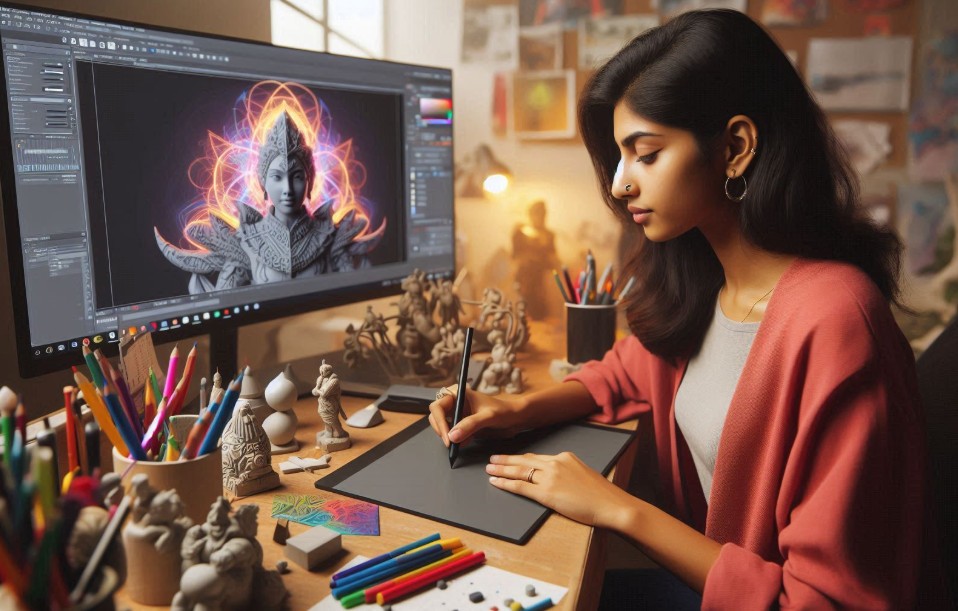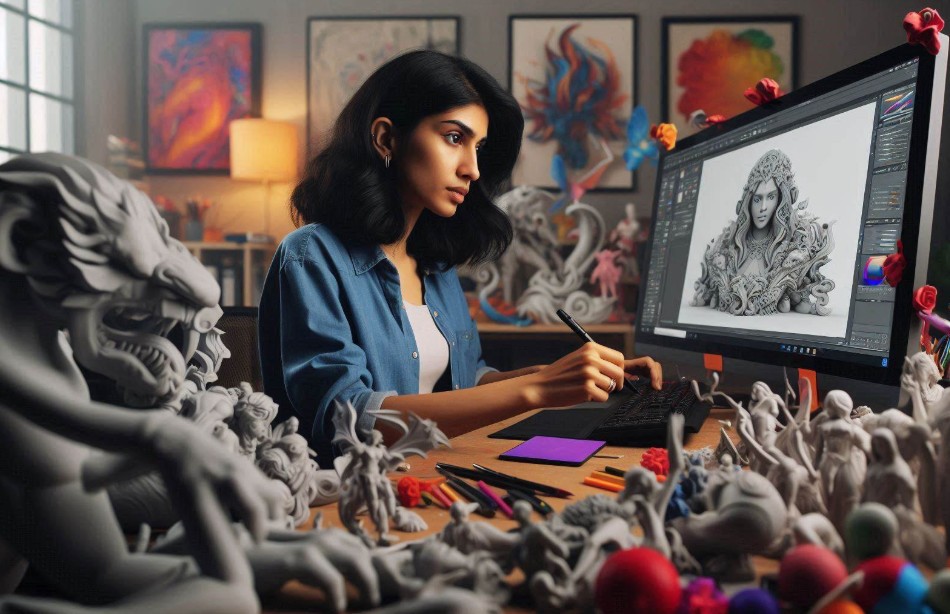In recent years, there has been a significant advancement in the field of Artificial Intelligence (AI) and Augmented Reality (AR). These technologies have become increasingly popular and have the potential to enhance virtual experiences in various fields such as gaming, education, healthcare, and...
How Digital Sculptors Work with 3D Models

The art of transforming ideas into three-dimensional visual expressions is an exciting and innovative field. Using advanced technology, professionals bring life to their creations through precise techniques and tools. This process allows artists to shape complex forms, textures, and structures that are not only visually stunning but also functional in various industries such as gaming, film, and product design.
By mastering specialized software and equipment, these artists unlock a vast range of possibilities. From conceptualizing abstract figures to fine-tuning intricate details, every step requires both creativity and technical skill. The result is a highly detailed and realistic representation that stands out in any medium.
In this article, we explore how skilled individuals push the boundaries of their craft, exploring the tools, methods, and inspiration that shape their exceptional works. Each creation tells a story, and the journey from initial sketch to finished piece reflects the passion and expertise behind the scenes.
Tools and Software for 3D Model Creation
The development of intricate 3D objects relies heavily on a range of advanced tools and software that enable precision and creativity. These platforms provide artists with the necessary resources to construct complex shapes, add fine details, and refine every aspect of the design. By using the right tools, creators can seamlessly transition from conceptual ideas to fully realized visual content, suitable for a variety of applications.
Essential Software for 3D Artistry
Several software programs stand out as essential in the world of 3D craftsmanship. These applications offer a variety of features, from basic modeling to advanced texturing and rendering. Popular options such as Blender, Maya, and ZBrush allow artists to sculpt highly detailed designs with ease. These programs provide a range of brushes, tools for manipulating geometry, and options for simulating real-world physics and materials. The versatility of these platforms allows for an in-depth creative process, making them ideal for professionals and enthusiasts alike.
Hardware for Precision and Efficiency
Alongside software, the right hardware is vital for achieving high-quality results. Powerful workstations with high-end processors and graphic cards are essential to handle the demanding nature of 3D rendering and simulations. Additionally, specialized input devices such as graphic tablets and 3D pens provide greater control, enabling artists to make subtle adjustments with ease. These tools ensure that every detail is captured with accuracy, from fine texture mapping to the positioning of complex elements.

Exploring the Creative Process in Digital Sculpture
The process of bringing an idea to life through three-dimensional art is both a technical and imaginative endeavor. It begins with a vision or concept, which the artist must translate into a tangible form. Throughout this journey, creativity plays a central role in shaping the final piece, while technical expertise ensures that each element fits seamlessly together. This combination of inspiration and skill results in a captivating and polished work of art.
Conceptualizing the Design
The initial phase of the creative process often involves brainstorming and sketching out ideas. Artists may draw inspiration from a variety of sources, whether it be nature, abstract concepts, or other forms of art. Once the vision is clear, rough drafts or wireframes are created, providing the foundational structure for the final piece. These early stages focus on the overall shape and composition, laying the groundwork for more detailed work later on.
Refining and Detailing the Piece
Once the basic structure is in place, the next step is to add intricate details that bring the design to life. This phase includes sculpting finer features, such as textures, facial expressions, or organic shapes. At this stage, the artist must carefully balance creativity with technical precision, ensuring that the design remains both visually compelling and structurally sound. Fine-tuning the smallest details can take considerable time, as each adjustment adds depth and realism to the piece.



